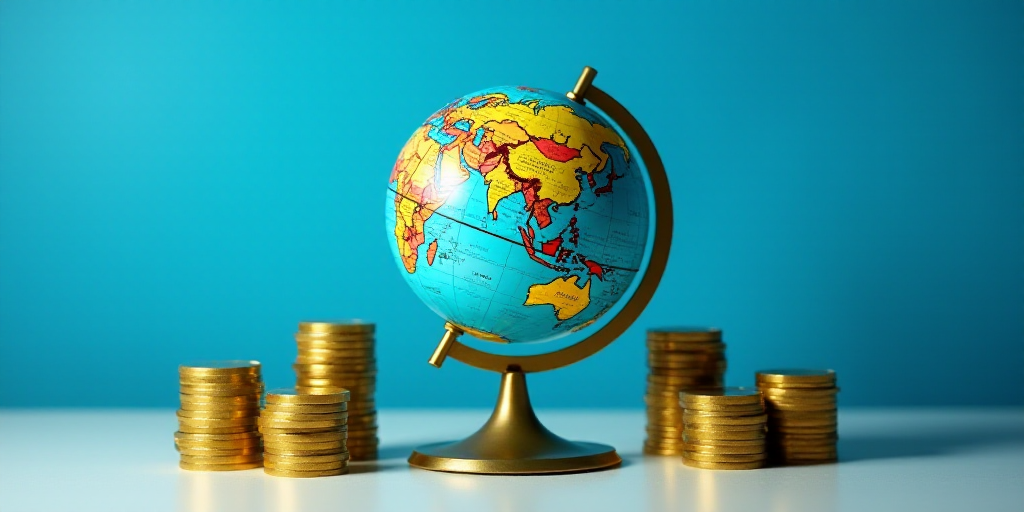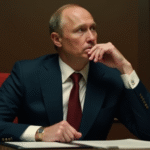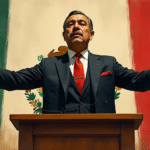Introduction
As the world becomes increasingly volatile and complex, policymakers, business leaders, and investors must reassess the mental models they use to analyze the global economy. Specifically, they need to pay attention to three structural dynamics reshaping the international landscape and creating a more fragmented and compartmentalized world: capital flows, demographic changes, and political ideologies.
Capital Flows
Changes in capital flows are largely driven by regulatory requirements (e.g., US restrictions on investment in China) and investors’ pursuit of more lucrative opportunities across sectors and regions. Today, the US accounts for nearly 70% of global market capitalization and attracts over 70% of private investment flows into a $13 trillion global market for stocks and credit. This remains true despite recent widespread stock sales.
However, global debt has reached 237% of world GDP, raising concerns about hidden leverage and the extent of financial system vulnerability. The US government alone owes $36 trillion (124% of GDP), with a significant portion of its debt held by China, a country with which it maintains a tense relationship.
Furthermore, hidden leverage and bank informal sector debts can pose problems. According to S&P Global, by the end of 2022, the informal banking sector held $63 trillion in financial assets (78% of world GDP). A more detailed analysis also shows that by 2024, the informal banking sector accounted for 70% of US mortgage originations and leveraged loans. Investors and corporate leadership must consider who holds specific debts and where the debt obligations and key concentrations of financial leverage lie.
Demographic Changes
The global population continues to grow rapidly, with the United Nations estimating 11.2 billion people by 2100 (currently 8.1 billion). Nearly 90% of the world’s population resides in emerging markets and low-income regions, with projected demographic growth in the poorest economies (e.g., Africa, India, and the Middle East) equal to or exceeding the replacement rate of 2.1 children per woman.
Simultaneously, other countries are aging rapidly and experiencing lower birth rates; projections for Europe and China indicate significant population decline. According to Eurostat, the European Union’s population will peak at 453.3 million inhabitants by 2026 before gradually decreasing to 419.5 million by 2100. Data from the UN suggests China’s population could fall below 800 million by 2100, down from the current 1.4 billion.
These trends have extensive implications for global demand and production of various commodities, including food and energy. For instance, India, with a large but impoverished population, remains heavily reliant on coal and other fossil fuels rather than renewable energy sources.
Demographic shifts will also alter investment portfolios as aging populations transition from risk-taking (capitalist) to income-seeking (rentier) investors. However, markets must also adapt to a massive intergenerational wealth transfer from “baby boomers” to “millennials,” with Cerulli Associates estimating the figure could reach $84 trillion by 2045.
Political Ideologies
Considerations of ideological divisions between countries and regions are crucial. The market is already pricing in the breakdown of multilateralism and fragmentation of trade, capital flows, migrations, and ideas. Political and corporate leadership must account for these trends.
US-based multinationals continue to generate more than half of their revenue outside the US. However, they must now analyze how weakened US alliances and traditional trade relationships affect them.
On a broader scale, deglobalization has forced companies to centralize procurement, hiring, and trade of goods and services. It also threatens carry trade operations (borrowing at low interest rates in New York and London to invest in more lucrative regions) and complicates profit repatriation.
In the short term, tariffs and deportations from the Trump administration may impact wages and generate more inflation in consumer goods, wages, and prices across all sectors. Additionally, rising inflation may push up the cost of capital, which could be passed on to business investment repression.
In the long term, deglobalization and technological advances (e.g., artificial intelligence and quantum computing) will reinforce current ideological divisions.
Geopolitical Fissures
Significant political implications have already emerged from geopolitical fissures. Debates rage over state versus market capitalism and the reconfiguration of alliances and country groupings. New entities like the BRICS+ compete for global influence and attempt to bypass traditional multilateral institutions.
These countries already represent 45% of the world’s population and 35% of global GDP, playing an increasingly important role in setting prices and international trade for many goods and commodities. These developments complicate international alignment among countries and create obstacles even for previously lauded initiatives (e.g., UN Climate Change Conferences).
Simultaneously, global trade, finance, religion, energy, AI, and immigration are being weaponized, adding complexity that makes predicting policy outcomes more challenging. In practice, this added complexity and reduced visibility will likely shorten the time horizons for critical decisions on capital and human resource allocation.
Instead of planning for the typical five-year economic or business cycle, investors, entrepreneurs, and policymakers will need to focus on the next eighteen months in such a volatile environment. In this uncertain context, decision-makers must prioritize adaptability.
No one can commit to long-term strategies based on regulatory, geopolitical, or economic conditions that could change overnight.






